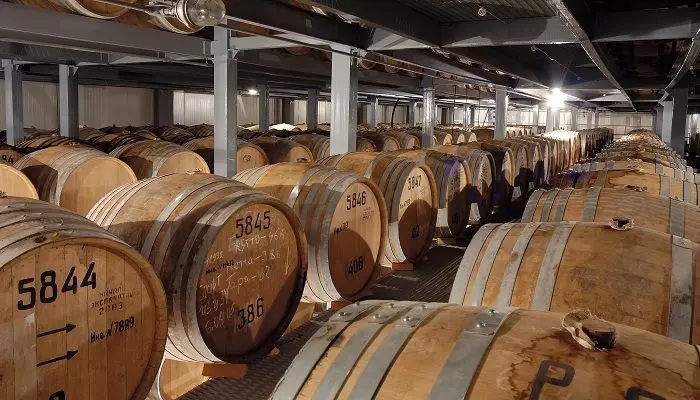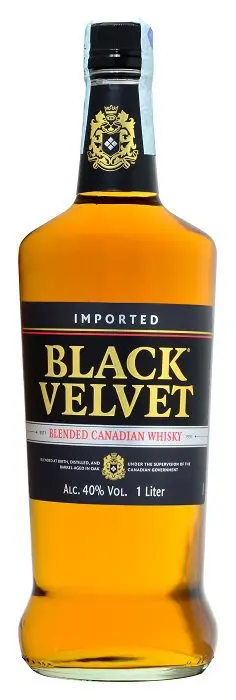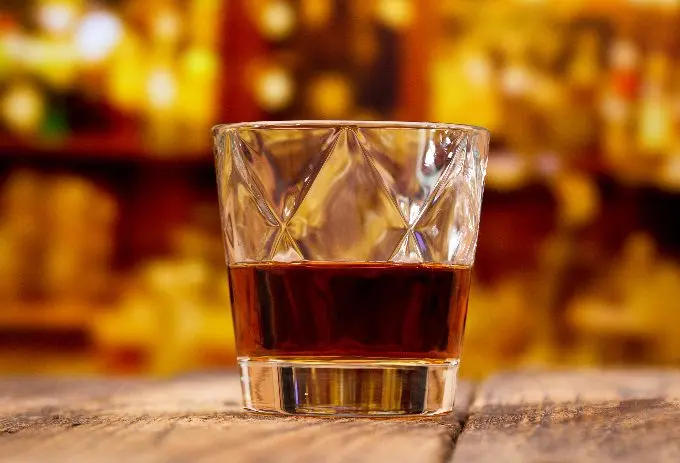Canadian whiskey (Canadian whiskey or Canadian Rye whiskey) is different from Scottish and American: it is a drink with its own history and recognizable taste. Interestingly, in Canada itself, whiskey is often called “rye”, although the amount of this cereal in the composition can be extremely small, and the inscription “rye” on the label will be more of a tribute to tradition than an indication of the real variety.
Short story. Initially, the British brought whiskey to Canada, then the country got acquainted with the American variation of the drink – corn bourbon, and in 1794 began to produce its own version of this strong alcohol. It is curious that in 1850 there were more than 200 distilleries in Canada, and by now only 9 remain. This is due to high excise taxes: it was easier for producers to merge into large enterprises than to support the work of small companies.
Today, Canada ranks third in the world in the production of whiskey, holding 17% of the world market. A distinctive feature of the local drink is blending. Canadians are not very fond of the classic single malt version and gravitate more towards blends.
Features of production technology
Canadian whiskey is a distillate (moonshine) of grain crops, mainly rye and corn, sometimes wheat. It is very important that all stages of production take place in Canada, the raw materials used must also be local, only then the drink can receive the official status of “Canadian whiskey”.
The basis is taken almost neutral in taste and smell 90-95-degree “base” distillate (actually pure alcohol), made from corn and barley malt by continuous distillation on the beer column. The base is diluted with a softer “fragrant” rye or wheat whiskey, obtained in a classic distiller (the strength of this component is 65 degrees, there is an individual organoleptic that forms the taste and aroma of the finished whiskey). In addition, the composition may include flavorings, caramel to give a richer color, juices, brandy, “higher wines” – unaged distillates of the same cereals.
It is curious that the aging of Canadian whiskey is at least 3 years, while the type of barrels is not regulated in any way (only two restrictions – they must be oak and no more than 700 liters), as well as the percentage of base and aromatic spirits. At the exit, after dilution with water, a strong 40-degree drink is obtained.

Famous manufacturers
Seagram’s – it was under this brand that the first blended Canadian whiskey appeared.
Canadian Club – the history of the brand has more than 150 years. It was this manufacturer that Al Capone himself preferred. Aged after blending, not before.
Black Velvet – be careful: both American and Canadian whiskey are produced under the brand, despite the fact that the company was founded in general by the British. The Canadian version has a pleasant taste with hints of rye bread and spices, there is a Reserve variation with eight years of exposure.

Canadian Mist is a young whiskey brand (the company was founded only in 1967). The variety is triple distilled and aged in charred white oak barrels.
Windsor – the first Canadian whiskey, officially received the status of “royal” and supplied to the court of the English monarchs.
Crown Royal – created specifically on the occasion of the visit of King George VI to Canada, and since then it has held the “royal” bar: the variety is of the highest quality, it contains more than 50 different spirits, the minimum exposure is 10 years.
How to drink Canadian whiskey
Canadian whiskey is often used as a substitute for American (bourbon) in cocktails, for example, in Manhattan (2 parts whiskey, 1 part vermouth, a drop of angostura and a cocktail cherry) or Old Fashioned (50 ml rye whiskey, 1 tsp water, a few drops angostura, sugar cube, 2 large ice cubes).

In addition, Canadian whiskey can be drunk neat in small sips from special glasses, diluted with ordinary water, soda (carbonated mineral water) – as you like. As for gastronomic combinations, there are no single well-established rules either: these can be meat dishes, cheeses, chocolate, pastries, fruits.









